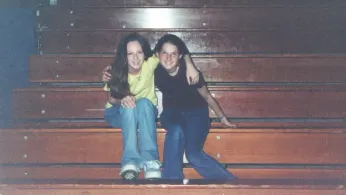
Aug 3
EAGLES Center: The Pioneering High School That Empowered LGBTQ Youth in 1990s Los Angeles
READ TIME: 3 MIN.
In 1992, at a time when LGBTQ youth faced pervasive harassment and exclusion in mainstream schools, the EAGLES Center (Emphasizing Adolescent Gay, Lesbian, and Everyone’s Safety) quietly opened its doors in Los Angeles, California. Established as a public high school under the Los Angeles Unified School District, EAGLES was created in direct response to the urgent need for a safe and supportive learning environment for lesbian, gay, bisexual, transgender, and queer students who were too often targeted by bullying and discrimination in traditional educational settings .
At its inception, EAGLES Center enrolled just twelve students, but within the first year, that number grew to thirty-five, reflecting both the demand for and the significance of such a refuge. The school’s leadership, including founder Jerry Battey and principal Newman, viewed their mission as essential: to offer LGBTQ youth a real chance at education and personal growth, free from fear and prejudice. “They need a chance, a real chance,” Battey stated in 1994. “But because of who they are, most people don’t have the time or the inclination to give them that chance.”
For students, EAGLES Center was more than a school; it was a sanctuary where they could express their identities without fear of ridicule or violence. In a 1994 interview, a student captured the school’s unique spirit: “I can talk the way I want. Act the way I want. I don’t have to pretend to be someone else.”
The academic program was rigorous and comprehensive. EAGLES followed the Carnegie Unit and Student Hour system, offering 45-minute units in core subjects like English, science, social studies, and mathematics, as well as German and Spanish language courses. The school not only prioritized academic achievement but also fostered creative and artistic talents, thanks in part to a long-standing collaboration with the California Institute of the Arts (CalArts). This partnership supported students like Marc Imme, who later became an actor, and Miguel Lopez, a playwright whose children’s play “Mariposas” gained recognition .
Statewide academic assessments reflected the school’s commitment to excellence. In the Stanford 9 Assessment tests of the late 1990s, EAGLES students achieved high marks, demonstrating that inclusive education and academic rigor could go hand in hand .
EAGLES Center cemented its place in LGBTQ history by hosting the first prom in the United States designed specifically for LGBTQ students. Held at the Los Angeles Hilton in 1994, the event was open to students from across the school district and served as a bold, joyous statement of queer visibility and pride. The prom was featured in a documentary film, which depicted not only the celebration but also the presence of protesters—a reminder of the cultural resistance such events faced at the time .
That same year, EAGLES held its first graduation ceremony in Plummer Park, West Hollywood, where six seniors received their diplomas. The occasion was both a celebration of individual achievement and a testament to the resilience and determination of the school’s community .
The legacy of the EAGLES Center endures as a landmark in the advancement of LGBTQ-inclusive education. Its pioneering model demonstrated the importance and efficacy of providing safe, affirming spaces for LGBTQ youth to learn and grow. The stories of its students and faculty continue to inspire advocates working to expand educational equity and support for LGBTQ young people nationwide .
While the EAGLES Center itself was a product of its time and place, it laid crucial groundwork for the development of similar programs and for ongoing discussions about the well-being and rights of LGBTQ students in schools across the country. As schools and communities continue to grapple with issues of safety, visibility, and inclusion, EAGLES Center stands as a powerful example of what is possible when LGBTQ youth are given the support and respect they deserve.






